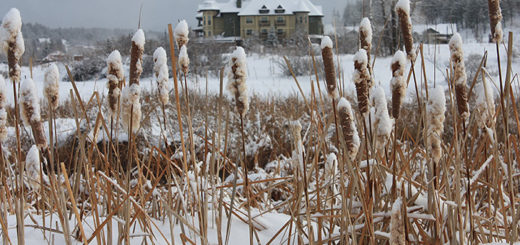The Art and Business of Recycling
This article was originally published in Colorado Central Magazine on August 31, 2022.
I’M A PRETTY GOOD RECYCLER. I don’t mind separating the materials and making periodic treks to the public recycle center, where I put recyclables in separate containers for collection. It makes me feel good. And it’s free. Or was free.
Effective April 2021, Chaffee County no longer has public drop-off sites for recycling. Our only option is to pay for the services of one of three local waste haulers. They offer curbside single-stream recycling for a monthly fee of $15 to $20. That’s in addition to the trash collection fee.
Sadly, when I Iook at the commingled recyclables in my single-stream recycle tote, I don’t get that warm, fuzzy feeling I’m helping the planet. I wonder how much, if any, of the mess I’m looking at actually gets recycled.
As a doubter, I set out to find out.
My local trash hauler explained the recycle tote contents are picked up by a dedicated recycle truck. Once full, it is driven to the GFL Materials Recovery Facility in Colorado Springs.
GFL is an initialism for Green For Life. This facility is part of GFL Environmental Inc. Their website states, “GFL, headquartered in Vaughan, Ontario, is the fourth largest diversified environmental services company in North America, providing a comprehensive line of solid waste management, liquid waste management and soil remediation services through its platform of facilities across Canada and in more than half of the U.S. states. Across its organization, GFL has a workforce of more than 18,000 employees.”
Who’d’ve thunk a big corporation was the recipient of the contents of my lowly recycle tote?
Upon arrival at the 50,000 sq. ft. GFL facility, the truck with the contents of my recycle tote is weighed with a typical load weighing 4-5 tons. My trash hauler company is billed $55/ton by GFL.
I was met outside the facility by congenial and safety-conscious Foreman Marcus Redden. He handed me a safety helmet, glasses and yellow vest. Once inside, I witnessed a recycle truck dumping its commingled contents on the floor close to the metering wheel, where the recycling process begins. Big pieces of cardboard were removed; but the rest was scooped onto a conveyor belt, then spread out by the metering wheel for easier sorting.
Redden explained, “We get grass, we get tires in the recycle. We have a total of 17 people online to help pick through the recycle.”
I was surprised at how many humans were physically involved in the recycling process.
Redden continued, “Aluminum cans are our moneymaker, at around 64 cents per pound. We try to get at least 43 bales on a truck, which averages about $40,000.”
I asked, “Say I throw in a beer can that has backwash in it ….”
“Glass and plastic bottles and cans should all be rinsed out with water,” he said.
I pressed on. “What about a spaghetti sauce glass jar? Does that need to be completely cleaned out?”
“Completely cleaned out. A lot of people leave it in there, and we’ll recycle it. But as you can smell, there isn’t a smell of waste in here. If you don’t clean out the recyclables, it makes our facility stink like the transfer station.” Redden was right. This facility had no odor.
He did an excellent job of explaining the process and answering my questions. But it was noisy, and I was a bit overwhelmed with the complexity and speed of the process. To put it in layman’s terms, imagine a multi-level, giant industrialized Chutes and Ladders game board, with bins and fast-moving conveyor belts thrown in, a huge magnet to pick up metal; a robot programmed to pick up #1, #2 and #5 plastics and aluminum cans; and workers (pickers) on conveyor lines. The pace was fairly frenetic. I kept thinking about repetitive stress injuries. But I digress. Back to Redden’s comments.
“Any leftovers go to the ‘rerun bin’ and are run through the system one more time,” he explained. “Anything left after that goes to the landfill. But pretty much, we recycle everything.”
As Redden guided me through his facility, I didn’t count how many times I said, “Amazing!” It truly was amazing to witness the incoming commingled recyclables converted to outgoing bales of separated recyclables, ready for transport to the buyer. And there are buyers. This operation is not the government, so they must make a profit to stay in business.
Final words from Redden: “We take our jobs very seriously here. We try to keep our customers happy. They want this material clean, so we make sure it’s clean. And safety is a big issue. Everyone has their helmets, glasses, vests and steel-toed shoes. The best thing about it is we all have to work together as a team. If we don’t, nothing gets done. Look around. No one is screwing around. Everyone is doing their part, from the guys driving to the guys on the line. Everyone’s working.” Indeed they were. Impressive.
I thanked Marcus Redden for my tour, turned in my safety gear, then met with Recyclables Material Manager Clint Cordonnier. He explained, “My responsibility is to find homes for all these materials.”
My first question: “What percentage of materials received actually get recycled?”
“Ninety percent is a realistic number,” he said. “We’re proud to say we have a 10% threshold, and we work very hard to get to that. We take in on average about 2,000 tons a month in material; and there’s going to be on average 200 tons that end up in the landfill because of improper recycling, like a garden hose or Christmas lights.”
Next question: “GFL’s website states ‘All items must be CLEAN OF FOOD.’ If I drink a can of beer, for example, and shake it out but don’t rinse it out, is that acceptable for recycling?” (I wanted to see how his response compared with Marcus’ response.)
Cordonnier responded, “Would it be ideal for things to be rinsed out? Absolutely. Does it get done? No. That goes for aluminum cans, plastic bottles ….”
“And tin cans with tomato paste,” I chimed in.
“It would be great if everybody did that, and that’s what we try to educate people to do. But the percentage of people that actually do that is slim, although all of our literature specifies it must be clean. And the people on the line don’t want to have stuff splashing in their face when they are sorting it. It’s not pleasant as it is. And to be hit in the face with milk from a gallon jug that has been crushed…”
I confessed I have been throwing recyclables in the garbage instead of recycling them because they are not completely clean, as their literature stipulates.
Cordonnier’s response? “No, it needs to go in the recycle, absolutely.”
Then I explained why I don’t clean some recyclables. “We’re always reminded about the drought and to conserve water. I do weigh how much water I need to clean this so it can be recycled. Now I know it doesn’t have to be spiffy clean, and you will still accept it.”
Cordonnier said, “It’s all about sustainability. We’ve been talking about the recycling of material, but water is another valuable resource. I hope that we have been able to shed some light and get some of those educational points across that, yes, we would appreciate having every single thing rinsed out, but it’s not realistic. I would rather have that piece of material come here, not rinsed out, than go to the landfill.
And here’s something else I learned from Cordonnier: “One of the biggest things I can convey to people is, when they put recyclables in the tote, leave them in their original form. When you get done with that beer, don’t crush the can. It makes it easier at the conveyor. If there’s a can going by, and there’s paper, a crushed can will get stuck in the paper, making it more difficult to get recognized and separated.”
I set out to find out. I found, through firsthand observation, Chaffee County’s single-stream recycling works. GFL Materials Recovery Facility, Colorado Springs, converts our commingled recycle tote contents into bales of separated recyclables ready for sale. Amazing.
Cordonnier concluded, “We are spending a great deal of time, effort and money because we have a responsibility to do the right thing.”
So don’t crush that can.
Cynda Green enjoys asking questions, finding answers or non-answers and writing about the experience. cyndagreen@gmail.com


